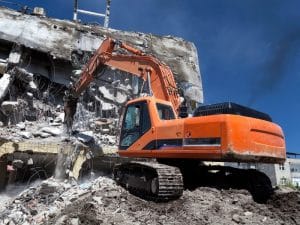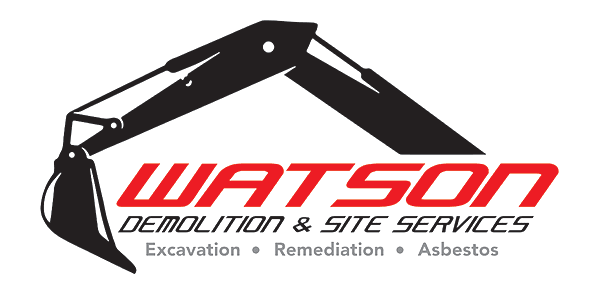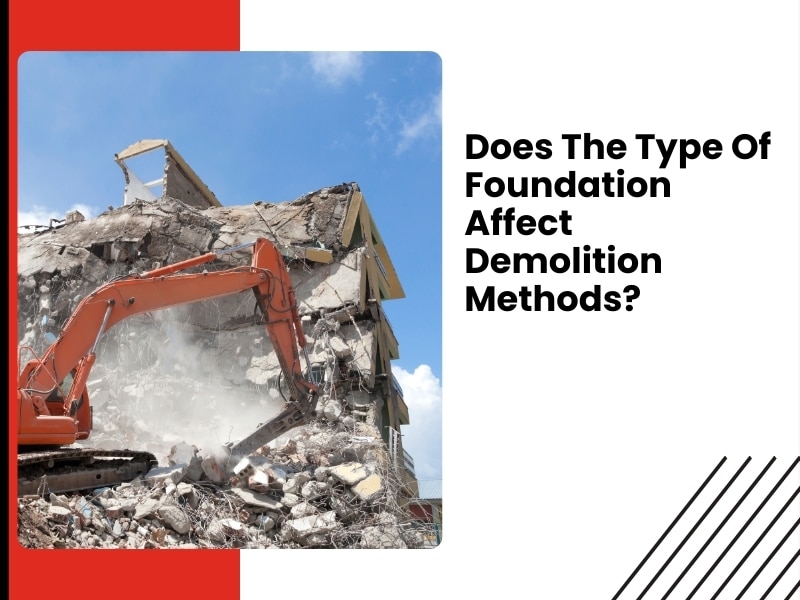Regarding demolition, types of foundations play a significant role in determining the most appropriate methods and equipment. Foundations are the structural base of any building, supporting its weight and ensuring stability. Different foundation types require tailored demolition strategies to ensure efficiency, safety, and cost-effectiveness. This article will explore how various foundations influence demolition processes and why relying on professionals for such complex tasks is crucial.
How do different types of foundations influence demolition methods?
The foundation of a building plays a crucial role in demolition. Whether residential, commercial, or industrial, the foundation type affects the methods used. Different foundations, such as slabs, piers, and beams, present unique challenges regarding depth, construction, and materials. Demolition teams must adjust their approach to prevent damage to surrounding structures and ensure safety. The foundation type influences the speed, safety measures, and debris removal process.
What are the common types of foundations found in residential and commercial buildings?
There are several common foundation types in residential and commercial construction, each influencing demolition methods. These include:
- Concrete slab foundations: A solid, flat concrete base common in modern buildings.
- Pier and beam foundations: Elevated concrete piers and support beams are found in older homes.
- Crawl space foundations: Similar to pier and beam but with accessible space underneath for plumbing.
- Basement foundations: Dug deep for additional space, requiring complex demolition.
- Pile foundations: Concrete or steel columns driven deep into the earth for taller buildings.
How does a concrete slab foundation affect the demolition process?
A concrete slab foundation is common in modern homes and buildings. While durable, it’s challenging to break during demolition. The process typically involves:
- Breaking the slab into smaller sections for easier removal.
- Hydraulic breakers or large machinery like excavators are used to break the slab.
- Remove reinforcing steel (rebar), often embedded in the concrete.
- Removal of the slab in layers, ensuring minimal disruption to the surrounding areas.
Do different types of foundations require specialised equipment for demolition?
Yes, different foundation types need specialised equipment. The materials and depth determine the tools required for safe, effective demolition. Here’s an overview of the equipment used:
- Concrete slab foundations: Hydraulic excavators, jackhammers, and concrete crushers.
- Pier and beam foundations: Excavators for lifting beams, impact hammers for concrete piers.
- Basement foundations: Large-scale excavators and concrete cutting tools to dismantle walls.
- Pile foundations: Pile drivers and cranes to remove steel or concrete piles.

Understanding demolition equipment is crucial in ensuring a safe and efficient demolition process. Professional demolition teams have the machinery and expertise to adapt to different foundation types, reducing environmental and property risks.
Can types of foundations impact the safety measures in demolition projects?
Yes, foundation type impacts safety in demolition. Each presents unique challenges:
- Slab foundations create debris hazards, requiring careful management to avoid flying concrete shards.
- Basement foundations involve confined spaces, needing proper ventilation and protective gear.
- Pier and beam foundations require precise dismantling to prevent collapsing beams, ensuring worker safety.
How does a pier and beam foundation change demolition approaches?
Pier and beam foundations, common in older homes, require a different approach from concrete slabs. They use concrete or steel piers and wooden beams to elevate the building. The demolition process typically involves:
- Dismantling the beams and piers which can be time-consuming.
- Lifting or jacking up the structure before removing the supports underneath.
- Handling wood and metal separately to prevent mixed debris.
Why do demolition methods differ based on the type of foundation?
Demolition methods differ based on foundation types because each foundation requires different techniques to ensure the process is safe, effective, and efficient. For example:
- Concrete foundations are solid and require heavy machinery to break into manageable sections.
- Wooden or metal foundations, like pier and beams, may require more delicate work, such as removing individual components before demolishing the structure.
- Foundations with basements or piles often require digging or special equipment to dismantle underground components.
How do demolition teams adapt techniques for various types of foundations in commercial projects?
Commercial demolition often involves deeper, complex foundations, requiring teams to adjust techniques for these intricate projects. This may include:
- Managing hazardous materials: Asbestos inspection before demolition is crucial, especially for older buildings with complex foundations, as asbestos, often found in these structures, can pose significant health risks.
- Using heavy machinery and cranes for large-scale demolition or when removing deep foundations.
- Working with structural engineers to ensure the stability of the building during the demolition process.
Why is it important to hire professionals for demolition projects?
Hiring professionals for demolition projects ensures that the job is done safely, efficiently, and in compliance with local regulations. Professional demolition teams have the experience, equipment, and expertise to handle various foundation types and challenges. The benefits of hiring professionals include:
- Proper safety measures to protect workers and surrounding properties.
- Access to specialised equipment for different foundation types.
- Efficient project management to ensure the demolition is completed on time and within budget.
- Environmental considerations include efficient waste reduction and recycling practices.
What role do the types of foundations play in site preparation after demolition?
After the demolition of a building, site preparation is crucial for future construction. The type of foundation affects how easily the site can be cleared and made ready for new projects. For example:
- Concrete slabs will leave behind large amounts of rubble that must be removed or crushed for reuse.
- Basements may require extensive excavation to fill the hole or level the ground.
- Pile foundations require the removal of deep foundation posts, which can be a significant task.
Why foundation type matters in demolition
In summary, the type of foundation plays a significant role in determining the appropriate demolition methods. Whether it’s a concrete slab, pier and beam, basement, or pile foundation, each requires specialised techniques and equipment to ensure a safe and efficient process. Foundation demolition experts understand the complexity of each foundation type and can tailor their approach accordingly, influencing everything from safety measures to site preparation.
Relying on experts like Watson Demolition & Site Services ensures a safe, effective, and thorough demolition for residential, commercial, or industrial projects. With years of experience, a solid commitment to safety, and specialised equipment, we are equipped to handle even the most complex demolition projects. With a strong safety record and a commitment to exceptional customer service, we ensure every project is completed carefully and efficiently. Our services go beyond demolition, offering excavation, tree removal, and more. Contact Watson Demolition & Site Services today for a free quote and consultation to discuss your demolition needs.

